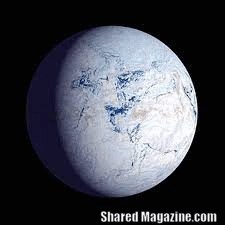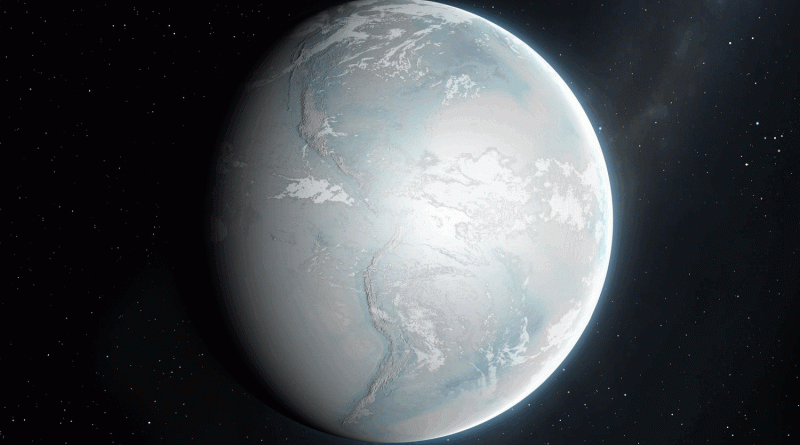The Enigmatic Era of Snowball Earth: A Comprehensive Analysis
Introduction
The Snowball Earth hypothesis posits that during certain periods in Earth’s deep history, our planet experienced extreme glaciation, enveloping the entire surface, including equatorial regions, in ice. This theory has sparked significant scientific discourse, as it attempts to explain critical climate events and their implications on the evolution of life. Geological and climatic evidence supports the notion of Earth being almost entirely frozen during these episodes, particularly during the Cryogenian Period.
Geological Evidence of Global Glaciation
Glacial Deposits and Striations
Sedimentary rocks and glacial deposits offer robust evidence for past glaciation. Striated rocks, which are scratches formed by the movement of glaciers, have been discovered at tropical latitudes. Such findings strongly indicate that ice sheets once extended far beyond polar regions, covering vast swathes of the planet’s surface.
Dropstones in Marine Sediments
Another key piece of evidence comes from dropstones—rocks that are carried by glaciers and released into marine sediments as the ice melts. These anomalous rocks have been found in locations consistent with widespread glaciation, bolstering the Snowball Earth hypothesis. The presence of these dropstones in what would have been tropical oceans points to a global freeze.
Causes of Snowball Earth Events
Reduced Solar Output
During the Proterozoic Eon, the Sun’s output was significantly lower than it is today. This reduction in solar radiation likely contributed to global cooling, making it easier for ice to spread from the poles to the equator.
Atmospheric Changes
A drop in greenhouse gas concentrations, particularly carbon dioxide (CO2), played a pivotal role in triggering glaciation. Volcanic activity could have temporarily reduced CO2 levels, leading to a weakened greenhouse effect. This decrease in atmospheric CO2 would have allowed temperatures to plummet, enabling the formation of ice sheets.
The Runaway Ice-Albedo Feedback Loop
The albedo effect, where ice and snow reflect more sunlight than darker surfaces, created a feedback loop that exacerbated global cooling. As ice advanced, more solar radiation was reflected back into space, causing further temperature drops and the expansion of glacial coverage. This feedback loop is crucial for understanding how an initial cooling phase could spiral into a full Snowball Earth state.
Impact on Life and Evolution
Survival in Extreme Conditions
The global ice coverage posed significant challenges to life. Most of Earth’s surface would have been inhospitable, yet evidence suggests that life persisted in isolated refugia, such as hydrothermal vents and subglacial lakes. Microbial life forms, particularly extremophiles, may have adapted to these harsh conditions, setting the stage for evolutionary innovations.
Post-Snowball Earth Diversification
The eventual thawing of Snowball Earth was likely driven by volcanic outgassing, which released CO2 back into the atmosphere. This accumulation of greenhouse gases triggered a rapid warming phase, melting the ice and creating a surge of nutrient-rich meltwater. This influx of nutrients may have fueled a burst of biological productivity and diversification, contributing to the subsequent emergence of complex multicellular organisms.
Geological and Climatic Recovery
The Greenhouse Gas Surge
Once volcanic activity reintroduced CO2, the greenhouse effect intensified, raising global temperatures and initiating the deglaciation process. The warming period was rapid compared to the glaciation phase, leading to dramatic shifts in Earth’s climate and geology. Evidence from sedimentary records indicates the deposition of cap carbonates—a distinct layer of carbonate rock that forms under warm conditions—immediately following glacial deposits.
Cap Carbonates and Geochemical Signatures
Cap carbonates provide vital clues to the aftermath of Snowball Earth. These rocks are rich in isotopic anomalies that suggest a period of intense chemical weathering and rapid warming. The presence of these cap carbonates worldwide supports the theory of a dramatic, global-scale climatic shift.
Conclusion
The Snowball Earth hypothesis represents one of the most profound examples of climate extremes in Earth’s history. The evidence for global-scale glaciation and subsequent recovery not only reshaped our understanding of ancient climate systems but also highlighted the resilience and adaptability of life. These glaciation events may have been crucial for the evolutionary leap toward complex multicellular organisms, paving the way for the rich biodiversity we observe today.
Understanding Snowball Earth helps modern scientists draw parallels between ancient climate mechanisms and contemporary climate challenges, emphasizing the intricate balance of Earth’s systems and the far-reaching consequences of climatic shifts.
